@Polkadot is a platform on which blockchain networks are built and connected into one unified network. These connected chains, called parachains, form a living organism of networks all in sync and secure. This forms the foundation on which Web3 will be built.
Polkadot is complicated as hell! This 24-tweet thread is a beginner's guide to @Polkadot $DOT and @KusamaNetwork $KSM in simple English.
What is Polkadot? Kusama? Parachains? Crowdloan and Parachain slot auction?
Comment with other questions and share if you learn something ⤵️

@Polkadot is a platform on which blockchain networks are built and connected into one unified network. These connected chains, called parachains, form a living organism of networks all in sync and secure. This forms the foundation on which Web3 will be built.
Think of it as drag-and-drop blockchain consensus, or even easier, like Music EQ with dials up & down on certain features.
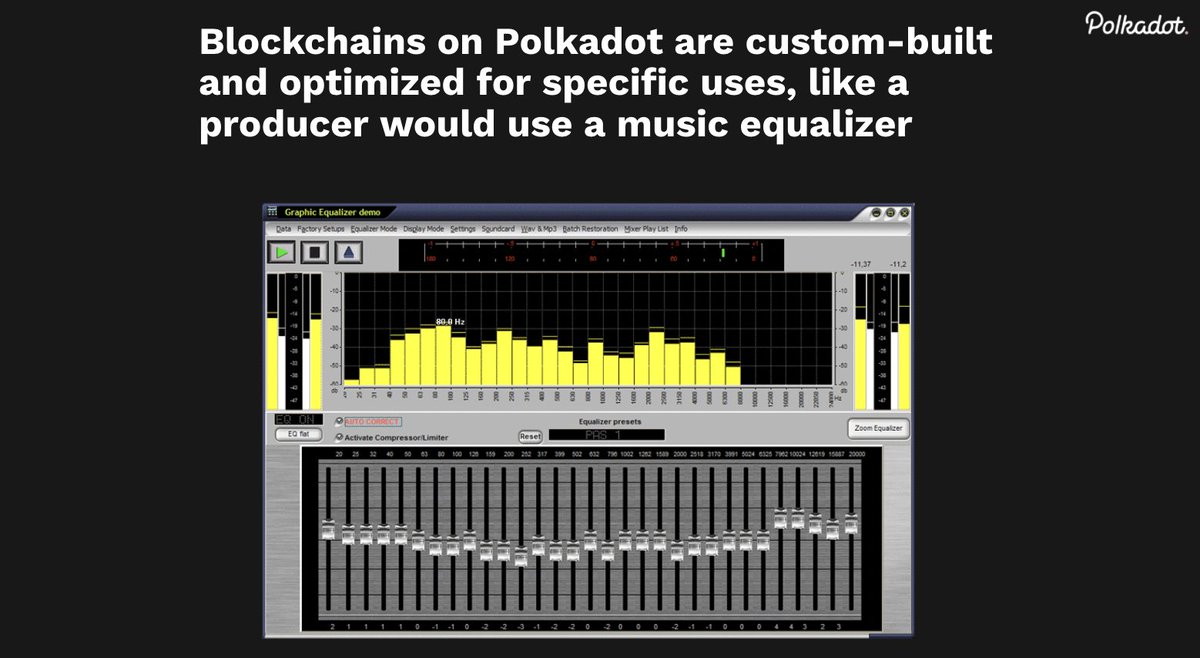
Dev teams use @Polkadot's Substrate framework to build custom chains for a specific use/vertical, such as @AcalaNetwork for DeFi, @PhalaNetwork for Privacy, @chainlink for Oracles, or @hydra_dx for liquidity.
Legacy networks like #Ethereum are called "layer 1" chains. These are single blockchains, operating in isolation. Parachains are also layer 1 chains. Polkadot is one level below, a "layer zero" multi-chain growing to 100+ networks.
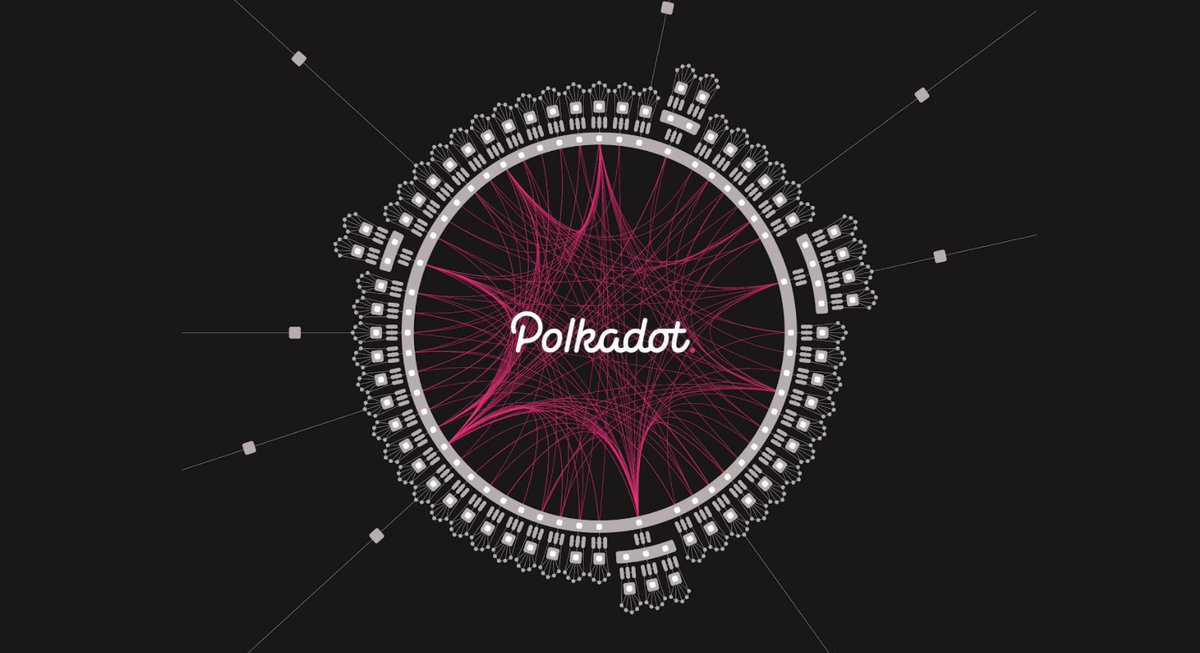
@Polkadot will be bridged to existing networks like @ethereum and #bitcoin via bridges built by teams like @InterlayHQ (BTC), @snowfork_inc (ETH), @ChainSafeth & @centrifuge (ETH), @chainx_org (BTC), and more.
Kusama is essentially the exact same code/archtr as Polkadot, but its on-chain governance moves 4x faster (7 days) and there are lower barriers to entry for teams to get a slot on the network (more on this below).
The model is Testnet->Kusama mainnet->Polkadot mainnet.
This ensures code is as flawless as possible before going to @Polkadot
For the sim/difs between @Polkadot and Kusama, check out this post: https://t.co/3aYG3jWTgo
Teams like Acala are launching @AcalaNetwork on Polkadot and @KaruraNetwork on Kusama. @purestakeco is similarly launching Moonbeam (DOT) & Moonriver (KSM).

@Polkadot has 100+ parachain "slots" (see below) which must be 'leased' for access to Polkadot's security and ability to communicate with other chains.
In fact, no team is "built on Polkadot" until they win an auction!
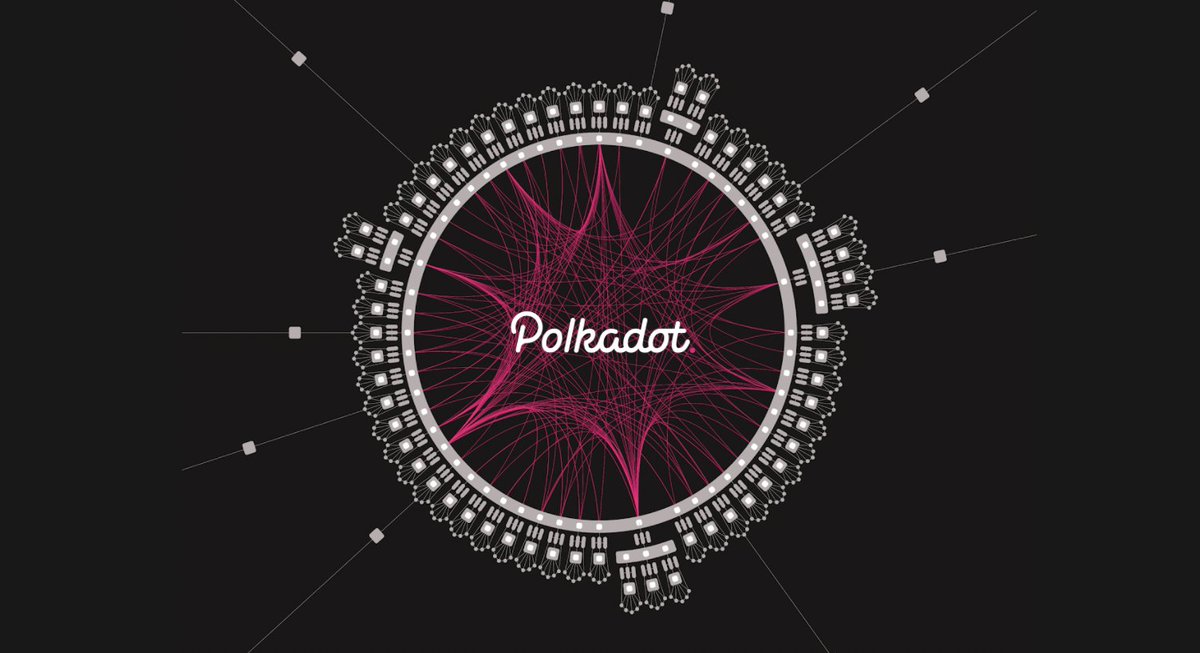
Candle auction: https://t.co/6ZI6hwNux1
This will enable an meta-infrastructure running myriad blockchains and applications on those chains, all in sync and sharing security.
Just like the databases/protocols powering the apps we use every day, end users and consumers shouldn't even know Polkadot and Kusama are there: Web3 apps that operate as good or better than their Web2 counterpart.
More from Tech
BREAKING: @CommonsCMS @DamianCollins just released previously sealed #Six4Three @Facebook documents:
Some random interesting tidbits:
1) Zuck approves shutting down platform API access for Twitter's when Vine is released #competition
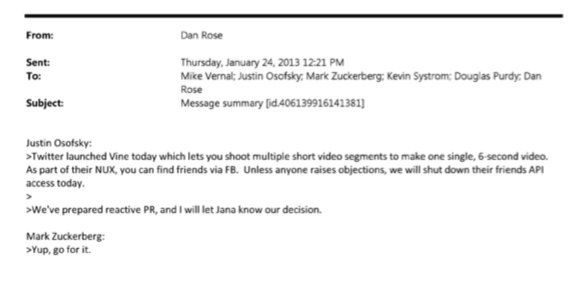
2) Facebook engineered ways to access user's call history w/o alerting users:
Team considered access to call history considered 'high PR risk' but 'growth team will charge ahead'. @Facebook created upgrade path to access data w/o subjecting users to Android permissions dialogue.
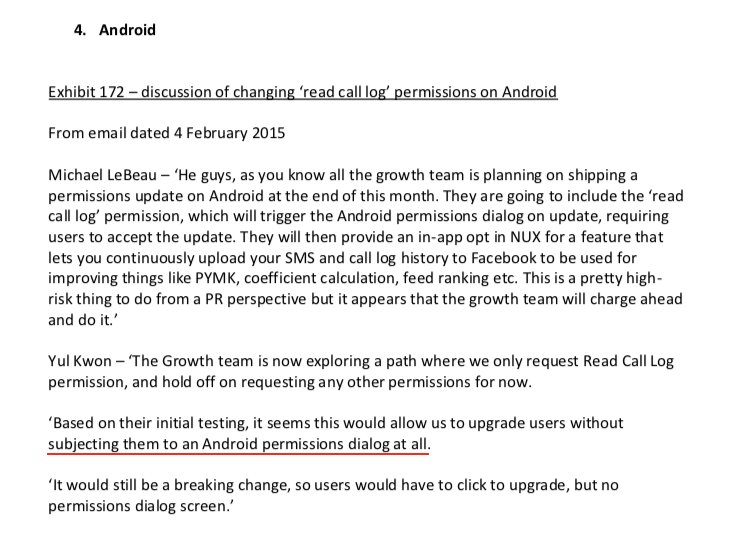
3) The above also confirms @kashhill and other's suspicion that call history was used to improve PYMK (People You May Know) suggestions and newsfeed rankings.
4) Docs also shed more light into @dseetharaman's story on @Facebook monitoring users' @Onavo VPN activity to determine what competitors to mimic or acquire in 2013.
https://t.co/PwiRIL3v9x

Some random interesting tidbits:
1) Zuck approves shutting down platform API access for Twitter's when Vine is released #competition

2) Facebook engineered ways to access user's call history w/o alerting users:
Team considered access to call history considered 'high PR risk' but 'growth team will charge ahead'. @Facebook created upgrade path to access data w/o subjecting users to Android permissions dialogue.

3) The above also confirms @kashhill and other's suspicion that call history was used to improve PYMK (People You May Know) suggestions and newsfeed rankings.
4) Docs also shed more light into @dseetharaman's story on @Facebook monitoring users' @Onavo VPN activity to determine what competitors to mimic or acquire in 2013.
https://t.co/PwiRIL3v9x

The 12 most important pieces of information and concepts I wish I knew about equity, as a software engineer.
A thread.
1. Equity is something Big Tech and high-growth companies award to software engineers at all levels. The more senior you are, the bigger the ratio can be:

2. Vesting, cliffs, refreshers, and sign-on clawbacks.
If you get awarded equity, you'll want to understand vesting and cliffs. A 1-year cliff is pretty common in most places that award equity.
Read more in this blog post I wrote: https://t.co/WxQ9pQh2mY

3. Stock options / ESOPs.
The most common form of equity compensation at early-stage startups that are high-growth.
And there are *so* many pitfalls you'll want to be aware of. You need to do your research on this: I can't do justice in a tweet.
https://t.co/cudLn3ngqi
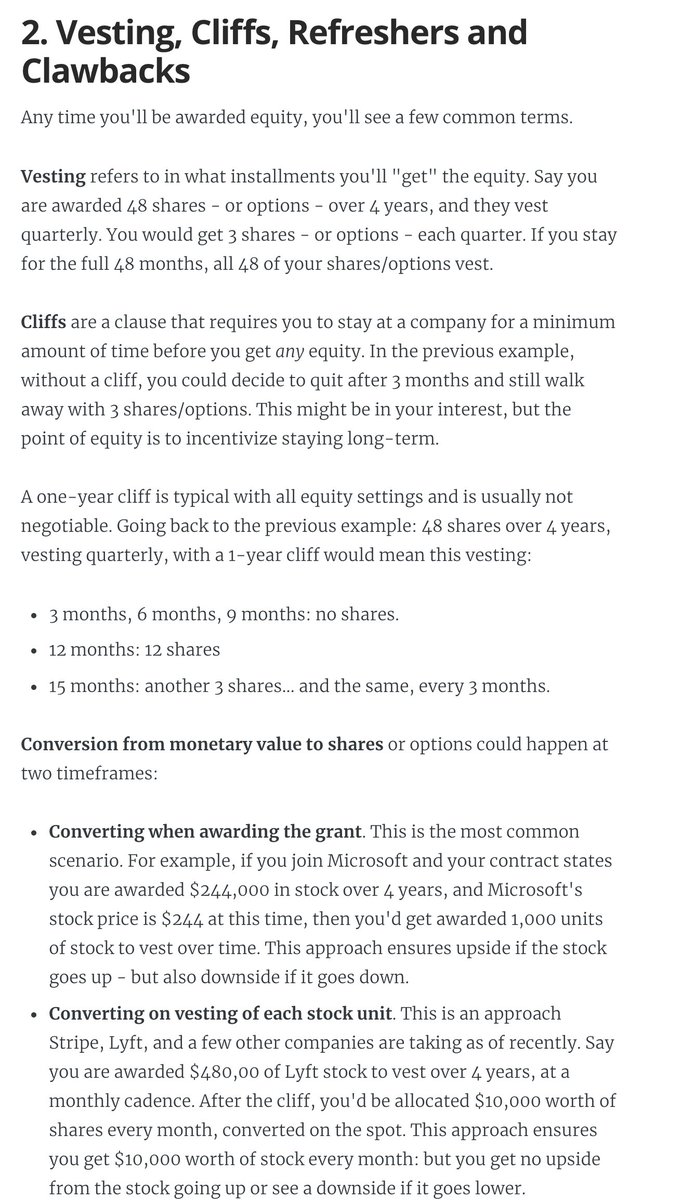
4. RSUs (Restricted Stock Units)
A common form of equity compensation for publicly traded companies and Big Tech. One of the easier types of equity to understand: https://t.co/a5xU1H9IHP
5. Double-trigger RSUs. Typically RSUs for pre-IPO companies. I got these at Uber.
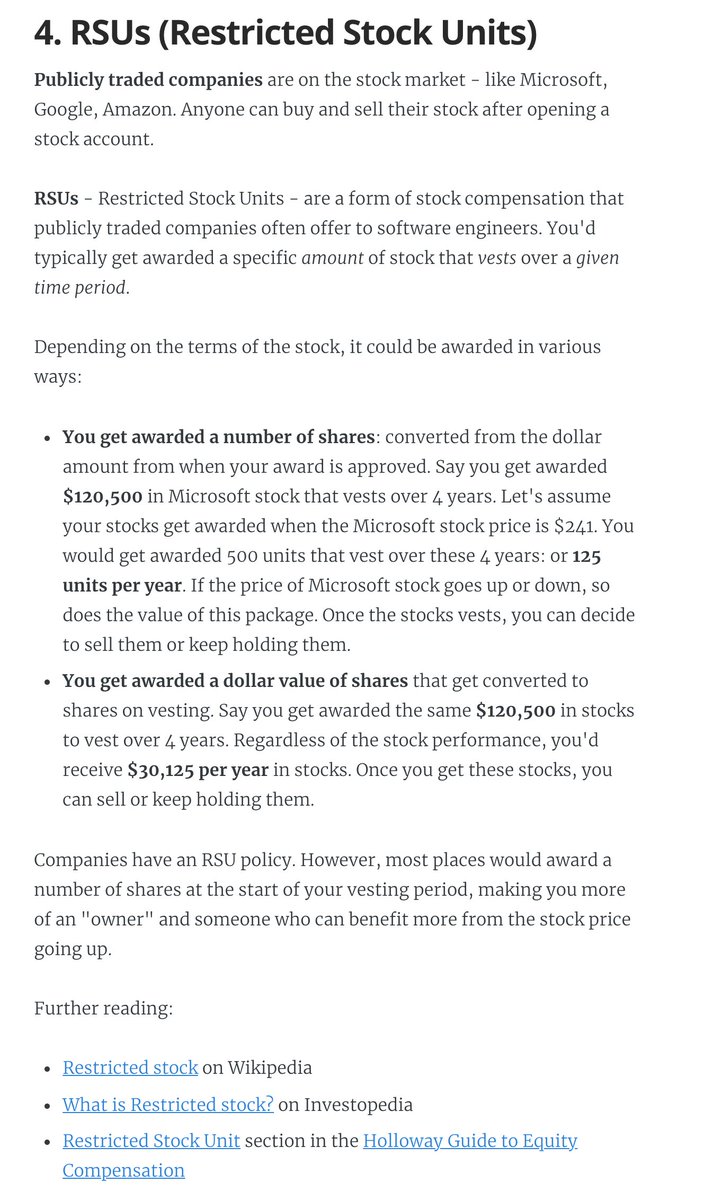
6. ESPP: a (typically) amazing employee perk at publicly traded companies. There's always risk, but this plan can typically offer good upsides.
7. Phantom shares. An interesting setup similar to RSUs... but you don't own stocks. Not frequent, but e.g. Adyen goes with this plan.
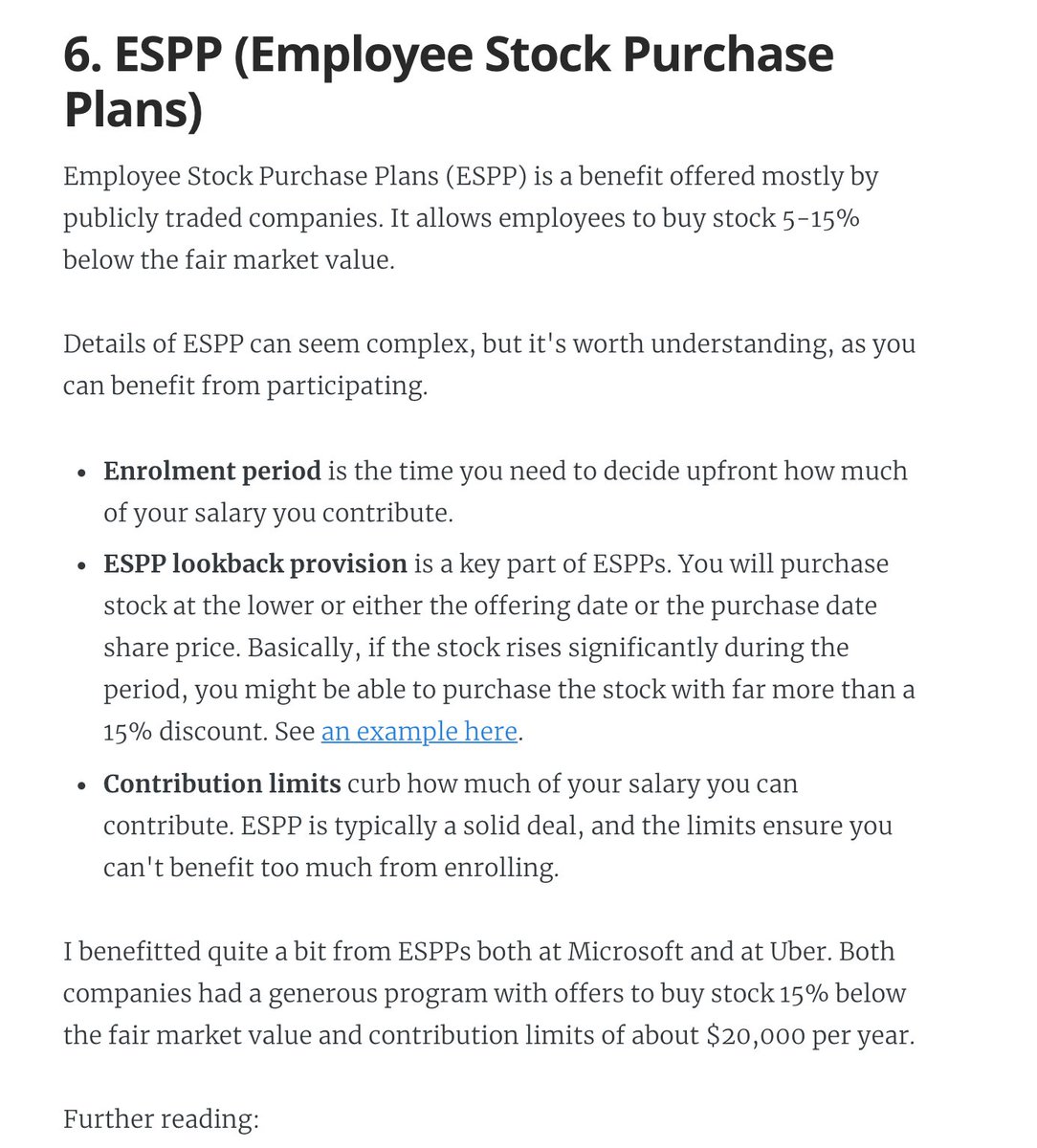
A thread.
1. Equity is something Big Tech and high-growth companies award to software engineers at all levels. The more senior you are, the bigger the ratio can be:

2. Vesting, cliffs, refreshers, and sign-on clawbacks.
If you get awarded equity, you'll want to understand vesting and cliffs. A 1-year cliff is pretty common in most places that award equity.
Read more in this blog post I wrote: https://t.co/WxQ9pQh2mY

3. Stock options / ESOPs.
The most common form of equity compensation at early-stage startups that are high-growth.
And there are *so* many pitfalls you'll want to be aware of. You need to do your research on this: I can't do justice in a tweet.
https://t.co/cudLn3ngqi

4. RSUs (Restricted Stock Units)
A common form of equity compensation for publicly traded companies and Big Tech. One of the easier types of equity to understand: https://t.co/a5xU1H9IHP
5. Double-trigger RSUs. Typically RSUs for pre-IPO companies. I got these at Uber.

6. ESPP: a (typically) amazing employee perk at publicly traded companies. There's always risk, but this plan can typically offer good upsides.
7. Phantom shares. An interesting setup similar to RSUs... but you don't own stocks. Not frequent, but e.g. Adyen goes with this plan.


























